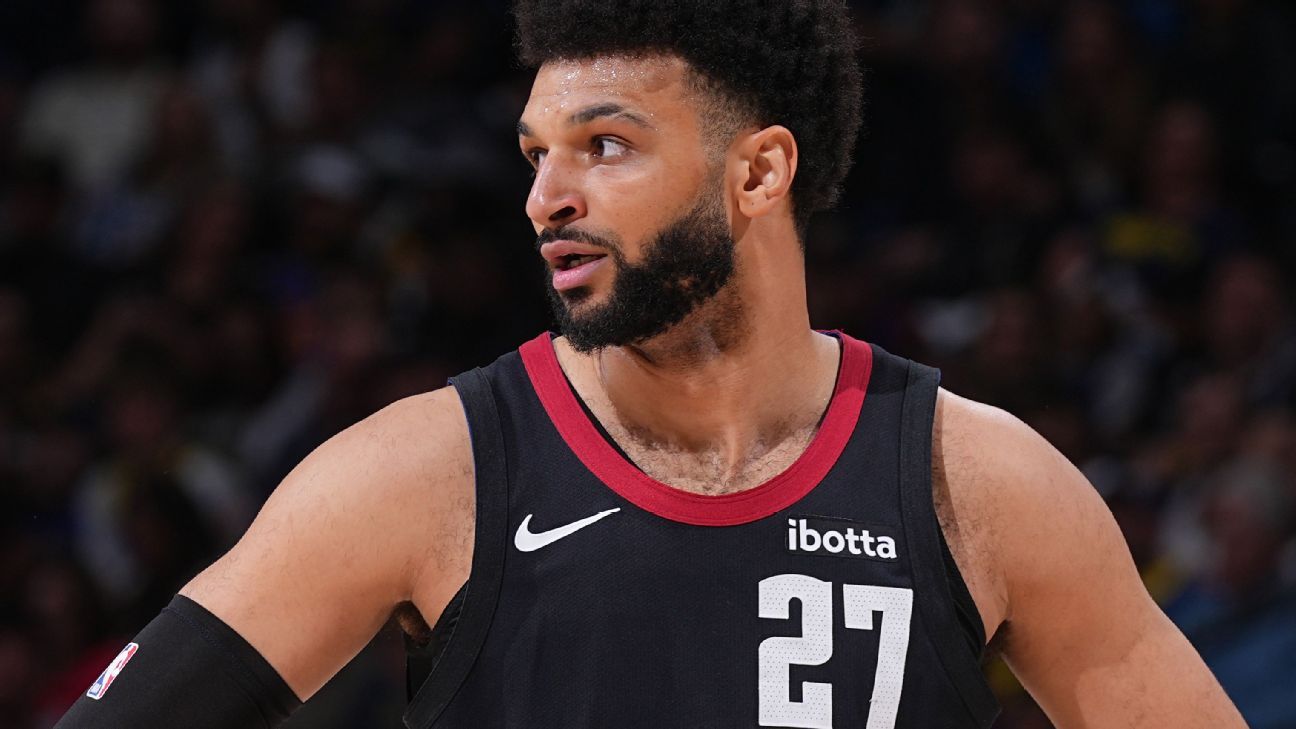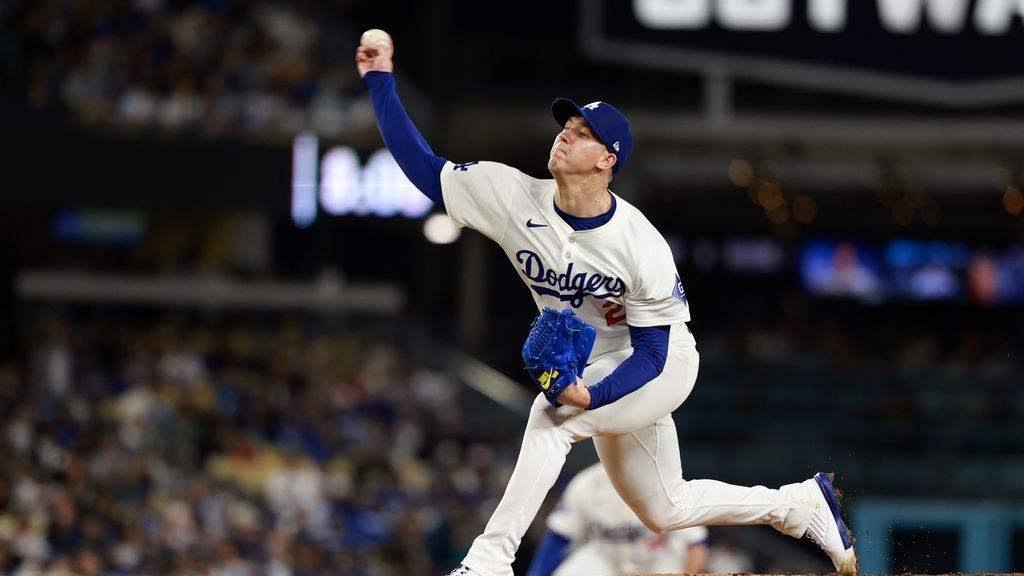
Uncertainty is never easy to deal with, even considering that a built-in amount of it hangs over our heads every waking moment of our lives. Right now, suffice to say, most of us are collectively dealing with more uncertainty than we've ever encountered. That's true not just for those in and around baseball, but for those in every walk of life.
Eventually, our regular routines will resume. We don't know when. We can't even begin to speculate when it will happen. But it will. And as it has at various times through American history, baseball will be in a position to act as a balm for our wounds, even if it's only as a sign that things have returned to normal.
When that happens, questions that right now are insignificant will have to be answered. How long do players need to get ready to play? How many games can be salvaged? And on and on ... the list of uncertainties is endless. Today, we want to deal with a small part of it: the schedule. That in itself presents plenty of uncertainties: How long does a viable championship season have to be? What are the competitive effects of a shortened schedule? What is the best structure for balancing the challenge of determining a worthy champion against the simple need to give baseball-starved fans something exhilarating to follow?
By the time baseball resumes, we'll need it more than we ever have. According to ESPN Stats & Information research, Thursday marked the first time since 1994 that we went at least seven consecutive days without a single meaningful game being played by one of the four major American sports leagues, and that doesn't include the gaping void opened up by the cancellation of the college basketball postseason tournaments. (Along with so many other things.)
All of this depends heavily upon timing, which brings us back around to the greatest source of our collective uncertainty: When will this be over? Of course, we don't know the answer to that right now, and it's frustrating. We can't begin to know, not when we don't even have an idea of how far along we've gotten in curbing the exponential spread of the COVID-19 virus -- or if we even have at all.
You already know all of this, of course, and the hope here is to divert your attention from all that to consider some baseball semantics for just a little while. We'll try to do so in such a way that you can refer back to this as time passes and -- we hope -- the return of the national pastime begins to seem something like a certainty. The scenarios outlined below should come into sharper focus as we get more information about how all of this might play out.
Let's begin by considering some of baseball's other shortened seasons. Unfortunately, there have been quite a few. Labor disputes and war have been the culprits before, with one quasi-exception: The 1919 season was limited to about 140 games because the powers that be simply decided that 154 games was too many. Why? After a period of global conflict and the 1918 Spanish flu pandemic, they didn't think fans would turn out. According to the Jan. 3, 1919, Buffalo Courier, National League president John Heydler said, "The [140-game] plan has been talked of for a number of years and it is the general belief among the club owners that this year, which marks the beginning of the reconstruction period, will be the logical season for trying out the new plan."
Heydler and the owners turned out to be 180 degrees wrong. The 1919 season broke box office records. In fact, the signs that the nation was starving for baseball were evident well before the season began. Heightened interest in the game prompted some commentators in the weeks before the season to call for a switch back to 154 games. But it was too late. The lesson: Perhaps experimentation is not the route to take on the heels of global crisis.
Some of the shortened seasons through history have resulted in some anomalies that, even years or decades later, are hard to reconcile. Suffice to say, that's something the current lords of baseball might want to avoid. Here are the problem seasons:
• 1972: After a spring training labor dispute, the season began late. Baseball just picked up the original schedule and started the season with no real effort to make up the missed games or balance the remaining slate so that teams would at least play the same number of games. As a result, in the American League East, the Tigers went 86-70, edging the 85-70 Red Sox. Detroit was declared division champs; Boston got nothing.
• 1981: A strike shut down the majors between June 11 and Aug. 10. The decision was reached to split the season, with the games played before the strike constituting the first half of the season and the games played after the settlement making up the second half. The teams in first place at the end of the first half of the season would play the division champs of the second half. But the schedules were uneven on both sides of the strike, with some teams playing more games than others. The A's won the AL West first-half crown, even though they lost one more game than either Texas or Chicago. How? Oakland had five more games on the books. The same thing happened in the same division in the second half. The Royals lost one more game than Oakland but took the second-half crown because they played four more contests. The two teams that finished with the best overall records in the NL -- St. Louis and Cincinnati -- didn't make the largest postseason field in baseball history to that point. It was a mess.
• 1995: This is the model we probably want to consider. The 1995 season began late, after the labor problems that kneecapped the 1994 campaign were resolved. Because of the late start, baseball drafted a new schedule that featured 144 games per team. Researcher Walter LeConte did a thorough breakdown of the differences between the original and revised schedules, if you're curious to learn the nuts and bolts. The big takeaway is that a number of one- and two-game "series" were scheduled, which seems less than ideal.
The 1995 season began on April 25 and concluded on Oct. 4, a period of 163 days. So teams played 0.88 games per day during that stretch. Last season, ignoring the two season-opening games in Japan, the season ran from March 28 to Sept. 29, a span of 186 days. At 162 games per team, that's 0.87 games per day.
Schedule density will be a key consideration in any post-shutdown structure that MLB comes up with. How many games, on average, can a team realistically play per day, and for how long? What kind of rosters would they need? Thirty players? Forty? It's unclear how to answer those questions. Such things would be a matter of negotiation between MLB and the players' union, and they would involve discussing relevant issues including the duration of a second spring training, roster size, travel days and more. And -- once again -- a lot would depend on when teams can get back on the field and how much time will have passed since baseball suspended operations.
The end date of a revised schedule would be yet another matter for debate, with the added variable of a possibly altered postseason format. For now, here's an estimate of how many games we might be able to get in based on a variety of season start dates, end dates and games per day:
The May 1 start date is already a no-go, but we're including it for reference. The latter three columns represent how many games each team could play within the given start and end dates, but with differing games-per-day densities. For instance, take a May 25 (Memorial Day) start date and an Oct. 31 end date in which you're having teams play an average of a game per day. The union wouldn't agree to that and the teams wouldn't like the number of doubleheaders that would have to be scheduled to pull that off, so it's a purely theoretical reference point. But in that case, baseball could accommodate a revised schedule of 160 games per team.
Right now, the only thing we know for sure is that the season is not going to start before the middle of May. That is a best-case scenario at present. If it happened, the end of the regular season could be pushed back to the middle of October, add in a couple of doubleheaders per month (bringing us to fairly normal density of games per day -- 0.92 games per day, instead of 0.87) and get in 142 games. Very similar to 1995.
Over at FanGraphs, ESPN contributor Dan Szymborski did an excellent look at how the playoff odds shift over various season lengths. Basically, the shorter the season, the more the odds are spread out among all the teams. Call it an increase of randomness, a smaller sample size, increased parity or whatever ... the reason we usually play so many games becomes apparent. You need them to begin to capture the true separation among teams.
Given a short enough schedule (Szymborski pegs a half season), even the Orioles stand a nonzero chance of winning the World Series. Moving from a full season to a half season, Szymborski has the Royals going from a 0.2% shot at making the postseason to 14.3%. At the other end of the scale, the Dodgers drop from 98.7% to 71.1%. The fewer games we can realistically get in, the less integrity the final standings will have.
That said, one would think that there are exactly zero of us who would want baseball to cancel the 2020 season altogether simply because it might result in a fluke champion. (Within bounds.) The question then becomes how to mitigate this possibility, while also imbuing whatever season we get with as much excitement as possible. To do this, there are four general paths that baseball might take. Each has varying consequences depending on the length of the schedule.
Path 1: Status quo
Here the question is simply how many games do we need to get in before we have to start monkeying around with scheduling formulas, playoff formats or even league structures? If we can get in 140 or more games, we'd be able to lop off a few interleague games and still run a more or less normal season, with the same playoff format in place. Given the table above, a June 1 start is probably the latest date at which we could reasonably get in that many games.
Even with that, you'd be talking about pushing the end of the regular season all the way back to the end of October. There are a number of cities in which it seems virtually impossible to play playoff baseball into and beyond the middle of November. So if the aim is to max out on regular-season games while preserving the normal postseason format, then you have to make some changes. One possible solution would be to play league championship series and the World Series at neutral sites in warm-weather locales. That concept would enable MLB to eliminate a number of postseason travel days and, perhaps, crown a champion before Thanksgiving.
Path 2: Maximum regular season, minimum postseason
Here the thinking would be to put the ultimate emphasis on determining worthy regular-season champions. You would do this by, first, playing as many games as the start date would allow, and second, scheduling as many games as possible between teams competing for the same thing.
Interleague games, for the time being, would have to go. You might also consider a one-time change in division formats. One option would be two divisions per league, as was the case between 1969 and 1993. First and foremost, you'd want each team to play multiple series home and away against each of its division opponents. Depending on the overall schedule length, then you could mix in some interdivision games.
Let's say the season begins on June 15 and MLB wants to get into the postseason by Oct. 15. Under those parameters, you could get in a schedule of about 107 to 113 games per team. Splitting the difference, let's say 110. In an eight-team division, you'd want to play each of the other seven teams at least 12 times (two home-and-home sets of three-game series). That would be 84 games. You could, perhaps, add a four-game series home and away to make it 14 games per division opponent, or 98 games.
The balance would be filled by a few interdivision games. (Or perhaps an interleague rivalry series, if we must.) The ratios in this format would scale up or down depending on season length. If we simply wanted to do one division in each league, then a balanced schedule could be comprised of 84 games (six games per opponent) and upward in increments of 14 depending on season length.
Then you could just move on to the World Series after league champions are determined. The obvious problem is that you leave a lot of revenue on the table with so few postseason games, both for MLB itself and for its broadcast partners.
Path 3: Balance between regular season and expanded postseason
Unless we are playing regular-season baseball by Memorial Day, this seems like the most likely path forward. Given the limited time to prepare and the complicated logistics involved, it wouldn't be easy to pull off. But you would want to create a reduced season that has three components working in conjunction: league structure, schedule formula and postseason format.
Given all that would be lost in a scenario that wipes out half a season or more, it makes sense that baseball would want to recoup some revenue and excitement with an expanded playoff format. But it's got to make sense. Craig Edwards at FanGraphs threw out some different ideas that are worth considering.
ESPN Daily Newsletter: Sign up now!
There are a number of possibilities in creating a regular-season/playoff-format balance. Again, the first step is to create a regular-season schedule that maximizes the integrity of the final standings and, in turn, the playoff bracket. You do that with an unbalanced schedule featuring a lot of games between teams competing for the same division crown. The second step is that however many divisions you have, you want to make sure that winning those divisions carries with it a meaningful reward.
If we keep the three-divisions-per-league format, Edwards suggests holding a round-robin to determine a wild card. That would be fun. He has a similar proposal for a two-divisions-per-league format. Another option with two divisions in each league would be to have the division champs earn a first-round playoff bye and have each league award four wild cards. That would give us 12 playoff teams per league, two more than normal.
Another, perhaps less palatable, option would be for baseball to test out a form of the playoff format proposal that was floated this winter. Here, you could have just one division per league and six wild cards. The season schedule would be balanced -- 84, 98 or 112 games per team, as outlined in Path 2. The division champ gets a bye, and the other six teams battle in a best-of-five opening round, with the higher seeds getting extra home games.
There are a number of scenarios that might work under the umbrella of this path. The general concept remains the same: trying to make up a little of the excitement lost during a truncated regular season with an expanded playoff format.
Path 4: All playoffs
If the COVID-19 outbreak drags on long enough, eventually baseball will be faced with the specter of canceling the 2020 season altogether. Indeed, uncertainty reigns, but that scenario might be more likely than the one we're about to outline here. That's because the longer the layoff lasts, the longer the players will need to ramp up into some semblance of game shape. So do you want to have two weeks, three weeks or a month of "spring" training in order to play what would amount to a tournament?
If we get to the point where even a 75- or 80-game schedule becomes unrealistic, but we've still got a couple of months with which to work, then maybe this would be the way to go. There would be plenty of reasons to give it a shot. For one thing, some baseball would be better than no baseball. It would be an exciting reward for fans who would have been through a lot more than a lost season. And it would serve to whet the appetite for the 2021 season -- a reminder of what we missed out on.
The format would, once again, depend on how much time we have. But it could work in a round-robin fashion similar to either the College World Series or the World Baseball Classic. Perhaps you could have some kind of expanded round-robin format to determine division titles.
Doing two divisions per league would be the cleanest solution, but perhaps you could even do four divisions per league. Having a three-team division in each league would be less than stellar, but none of these solutions represents an ideal outcome. If we have eight round-robin division champions, then we have a nice little tournament bracket set up for a month of best-of-seven series to determine the most unusual World Series champion in history. Or maybe we don't even call it the World Series. One silver lining of Path 4 is that it could be pulled off with relatively small rosters. The winner of our tournament would largely be determined by baseball's best players.
In the end, none of these scenarios is ideal. Only one scenario is: that COVID-19 disappears tomorrow and the ballplayers hurry back to camp for an Opening Day that would take place in a week -- on March 26. We are not going to obtain that ideal.
As the weeks pass, the options baseball will have to salvage some form of a season will change. The good news is that we're a long way from those options being exhausted. There are some creative and even fun solutions that could come into play if a significant portion of the season is lost. The 2020 baseball season still has a chance to be remembered for something other than a global pandemic.
Right now, that we still have time to work with might be a small consolation. But time is all we really have at the moment, and we have to take consolations where we can find them. For those of us who hold baseball in a special place, seeing the diamonds come alive once again will be the greatest consolation of all. It will mean that we will have gotten through this mess and earned all the rewards that the game is capable of giving us.















 Phone: (800) 737. 6040
Phone: (800) 737. 6040 Fax: (800) 825 5558
Fax: (800) 825 5558 Website:
Website:  Email:
Email: 






